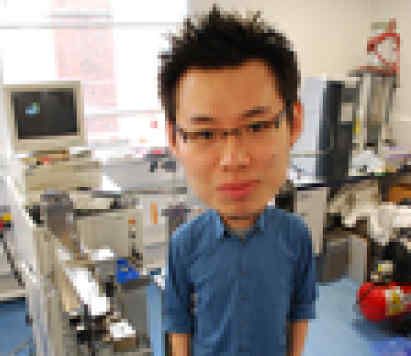BibTex format
@article{Caro-Astorga:2022:10.1016/j.carpta.2022.100245,
author = {Caro-Astorga, J and Lee, K and Ellis, T},
doi = {10.1016/j.carpta.2022.100245},
journal = {Carbohydrate Polymer Technologies and Applications},
pages = {1--6},
title = {Increasing bacterial cellulose compression resilience with glycerol or PEG400 as a route to more robust engineered living materials},
url = {http://dx.doi.org/10.1016/j.carpta.2022.100245},
volume = {4},
year = {2022}
}
RIS format (EndNote, RefMan)
TY - JOUR
AB - Bacterial cellulose (BC) is one of the current natural materials at the edge of innovation in engineered living materials (ELMs) research due to its ease of growth and outstanding properties as a hydrogel. One of the main limitations of this material, however, is its quick dehydration in open environments as water molecules leave the porous network. Here we show that other solvents with higher evaporation temperatures, namely glycerol and polyethylene glycol (PEG), can play the same role as water within the BC structure interacting with cellulose fibres via hydrogen bonds. We demonstrate that these molecules provide up to a 130-fold improvement in the Young´s Modulus of BC hydrogels to compression forces in a concentration dependent manner. To take advantage of these effects for application in BC-based ELMs produced by Komagataeibacter rhaeticus, we also explored the effect of glycerol and PEG400 on the survival of the BC-producing bacteria in BC pieces. PEG400 at 20% doubled the material resilience to compression forces, still allowing bacteria to survive within the material for weeks. These results open further opportunities to explore new applications and stacked storage conditions.
AU - Caro-Astorga,J
AU - Lee,K
AU - Ellis,T
DO - 10.1016/j.carpta.2022.100245
EP - 6
PY - 2022///
SN - 2666-8939
SP - 1
TI - Increasing bacterial cellulose compression resilience with glycerol or PEG400 as a route to more robust engineered living materials
T2 - Carbohydrate Polymer Technologies and Applications
UR - http://dx.doi.org/10.1016/j.carpta.2022.100245
UR - https://www.sciencedirect.com/science/article/pii/S2666893922000639?via%3Dihub
UR - http://hdl.handle.net/10044/1/99721
VL - 4
ER -
